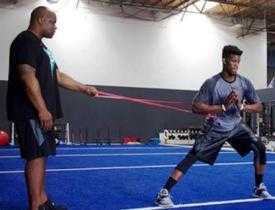Description
Course Name: Diploma in Physical and Sports Trainer
Course Id: DPST/Q1001.
Education Qualification: 12th Pass.
Duration: 370 Hrs.
How You will Get Diploma Certificate:
Step 1- Select your Course for Certification.
Step 2- Click on Enroll Now.
Step 3- Proceed to Enroll Now.
Step 4- Fill Your Billing Details and Proceed to Pay.
Step 5- You Will be Redirected to Payment Gateway, Pay Course and Exam Fee by Following Options.
Card(Debit/Credit), Wallet, Paytm, Net banking, UPI and Google pay.
Step 6- After Payment You will receive Study Material on your email id.
Step 7- After Completion of Course Study give Online Examination.
Step 8- After Online Examination within 7 days you will get Diploma Certificate soft copy(Scan Copy) and Hard Copy(Original With Seal and Sign) within 30 days.
Step 9- After Certification you will receive Prospect Job Opportunities as per your Interest Area.
Online Examination Detail:
- Duration- 120 minutes.
- No. of Questions- 60. (Multiple Choice Questions).
- 10 Questions from each module, each carry 10 marks.
- Maximum Marks- 600, Passing Marks- 40%.
- There is no negative marking in this module.
| How Students will be Graded: | ||
| S.No. | Marks | Grade |
| 1 | 91-100 | O (Outstanding) |
| 2 | 81-90 | A (Excellent) |
| 3 | 71-80 | A (Very Good) |
| 4 | 61-70 | B (Good) |
| 5 | 51-60 | C (Average) |
| 6 | 41-50 | P (Pass) |
| 7 | 0-40 | F (Fail) |
Benefits of Certification:
- Government Authorized Assessment Agency Certification.
- Certificate Valid for Lifetime.
- Lifetime Verification of Certificate.
- Free Job Assistance as per your Interest Area.
Syllabus
Diploma in Physical and Sports Trainer
History and Principles of Physical Education
Meaning and Definition of Education and Physical Education, Aim and Objectives of Physical Education, Role of Physical Education in General Education, Historical Development of physical education in India and World, Policies, Schemes, Awards, Honors and Awardees, Trophies/ Cups in Physical Education and Sport sat State/National level, Institutes for Physical Education and Sports in India (YMCA, LNUPE, SAI, NSNIS, IOA, AIU, SGFI etc.), Policies, Schemes, Awards: Bharata Ratna, Padmasri, Padmabhushan, Padmavibhushan, Arjuna, Dronacharya, Rajiv Khel Ratna, Ekalavya, Jhansi Laxmibai, Abhimanya,, Trophies/ Cups in Physical Education and Sports at State/National level, Physical Education in Ancient Greece – Sparta and Athens – Ancient and Modern Olympic Games – Asian Games, Physical Education in India – SAI, SDAT, School Level Competitions in Tamil Nadu. School games federation of India.
Foundations of Physical Education
Physical Education in relation to Humanities (Pedagogy, Psychology, Sociology, Statistics), Physical Education in relation to Science Disciplines: Anatomy, Physiology, Anthropometry, Kinesiology, Biomechanics, Nutrition, Heredity Traits, Unsynchronized development, Growth and Development at various levels – pre-adolescence, adolescence, adulthood, Differences in boys and girls, Classification of body types : Kretchmer’s and Sheldon classification, Learning – meaning and definition, Theories of Learning – Trial and Error Theory, Conditioned Response Theory, Insightful Learning, Laws of Learning: Law of Readiness, Law of Use and Disuse, Law of Effect, Law of Recency.
Yoga Education
Meaning, Definition, Importance and Types of Yoga; Development of Yoga in India, Effect of yogasana on various systems of body; Types and importance of asanas with special reference to physical education and sports, Ashtang Yoga – Yama, Niyama, Asana, Pranayama, Pratyahar, Dharna, Dhyan, Samadhi , Shatkarmas and Bandha Mudra, Effects of yogasanas on various systems of the body: Muscular system, respiratory system, digestive system, circulatory system; Types and importance of asanas with special reference to physical education and sports. Suryanamaskara of 12 stages, Meaning and importance of Ashtanga Yoga – Yama, Niyama, Asana, Pranayama, Pratyahar, Dharna.
Health Education & Environmental Studies
Meaning, Definition, Dimensions and Importance of Health; Principles of Health Education. Factors influencing health – Heridity, Environment and Health Habits, Coordinated school health programme – Health services, Health instruction, Health records and Health supervision, Common Health Problems in India, Communicable and Non-Communicable Diseases, Hygiene – Personal, Environmental, Occupational Health, Cleanliness and awareness through educational activities, Environmental Studies – Meaning, natural and men made Hazards. Environmental pollution – Meaning, Definition, prevention and control of Air, Water, Soil and Sound Pollution,. Natural Calamities – Cyclone, Tsunami, Earthquake – Their prevention and safety measures. WHO, UNICEF, UNESCO and other agencies.
Methods of Physical Education
Meaning, Definition, Importance and Factors Influencing on Methods of teaching, Principles of Presentation Technique and Class Management in physical education: Commands, Class Formation, Teaching aids : Audio visuals, Lesson Plan – Concept of lesson plan, Principles, importance of lesson plan. Preparation of Lesson Plan in Physical Education – Steps in lesson plan, Methods of classification of students: Mccloy method, YMCA method, Method of teaching: Command Method, Lecture Method, Demonstration Method, Discussion Method, Part Method, Whole Method, Part-Whole Methods, Whole part whole method and their application in minor, major, rhythmic calisthenics and Gymnastics.
Adapted Physical Education& Corrective Exercises
Adapted Physical Education- Meaning, Definition, Objectives and Importancem, Concept and Significance of Good Posture: Postural Deformities, Lordosis, Kyphosis, Kypholordosis, Scoliosis, Knocknees, Bow legs, flat foot and their Remedies, Corrective Exercises for Postural illnesses and deformities, Co-curricular activities for the disabled – Indoor/ Outdoor programmes, rhythmic and dance activities, aquatic activities, fitness testing of disabled child, Classification of various disabilities (Different abled) – physically challenged, mentally challenged, visually challenged, hearing impaired, Principles of adapted Physical Education programme.

